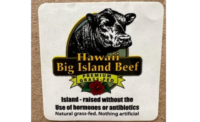On June 4, the U.S. Department of Agriculture’s Food Safety and Inspection Service (FSIS, or the agency) published a Federal Register notice, Expansion of Shiga Toxin-Producing Escherichia coli Testing to Additional Raw Beef Products. The notice announces that FSIS proposes to expand its routine verification testing to include testing for the six non-O157 Shiga-toxin producing Escherichia coli (STEC) identified as adulterants in ground beef, bench trim and raw ground beef components other than raw beef manufacturing trimmings (head and cheek, heart , partially defatted beef and lean finely textured beef, for example).
Currently, FSIS tests raw beef manufacturing trimmings, ground beef, bench trim and other raw ground beef for E. coli O157:H7, whereas non-O157 STEC tests are only used for samples of raw beef manufacturing trimmings. When FSIS mandated its STEC testing program in 2012, the agency was concerned there was not adequate laboratory testing capacity to test for non-O157 STEC in the other products. Under FSIS’ proposal, the same samples that are tested for E. coli O157:H7 will also be tested for non-O157 STEC.
One of the recent developments that facilitated this change from FSIS’ standpoint is the adoption of new laboratory methods. In February 2019, FSIS adopted a new initial screening method for STEC that allows FSIS to use a single combined workflow to screen samples for the presence of E. coli O157:H7 as well as non-O157 STEC. Given the advances in testing technology, along with two recent outbreaks attributed to non-O157 STEC, FSIS leaders think expanding testing for non-O157 STEC will improve food safety.
FSIS inspectors will follow the sampling protocols in FSIS Directive 10,010.1 to gather product samples; however, FSIS is evaluating alternatives such as using a sponge or cloth attached to a conveyor belt to determine whether these methods will yield results that are more representative of a production lot.
FSIS officials have indicated the agency has been testing for non-O157 STEC in samples that have been collected to test for E. coli O157:H7 for several months. The agency has been blinding the company’s identity on these tests. When the proposed expansion is implemented, FSIS will identify the company that produced the sample in PHIS.
FSIS’ goal is to collect and analyze at least 48 samples per year for each establishment producing more than 50,000 pounds per day of ground beef or beef manufacturing trimmings. The agency intends to accomplish this by increasing the sample collection frequency from a maximum of four samples a month to one sample a week in these larger establishments. This change will also affect the frequency with which Salmonella samples are gathered as all regulatory samples for raw beef are analyzed for both STEC and Salmonella.
FSIS will implement this change by reallocating resources from lower-volume beef establishments (those producing less than 50,000 pounds or less of ground beef or beef manufacturing trimmings per day).
FSIS is accepting public comments through Sept. 3. NP






